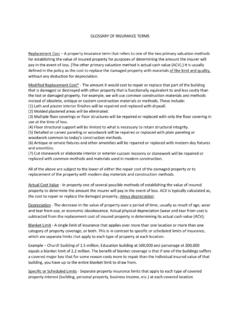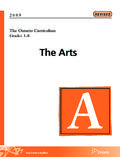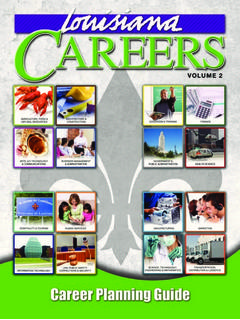Transcription of GLOSSARY OF MUSICAL TERMS
1 131 GLOSSARY OF MUSICAL TERMS A absolute music: instrumental music with no intended story (non-programmatic music) a cappella: choral music with no instrumental accompaniment accelerando: gradually speeding up the speed of the rhythmic beat accent: momentarily emphasizing a note with a dynamic attack adagio: a slow tempo allegro: a fast tempo alto: a low-ranged female voice; the second lowest instrumental range andante: moderate tempo (a walking speed; "Andare" means to walk) aria: a beautiful manner of solo singing, accompanied by orchestra, with a steady metrical beat art-music: a general term used to describe the "formal concert music" traditions of the West, as opposed to "popular" and "commercial music" styles. art song: (genre) a MUSICAL setting of artistic poetry for solo voice accompanied by piano (or orchestra) atonality: modern harmony that intentionally avoids a tonal center (has no apparent home key) augmentation: lengthening the rhythmic values of a fugal subject avant-garde: ("at the forefront") a French term that describes highly experimental modern MUSICAL styles B ballet: (genre) a programmatic theatrical work for dancers and orchestra bar: a common term for a MUSICAL measure baritone: a moderately low male voice; in range between a tenor and a bass Baroque Era: c1600-1750; a MUSICAL period of extremely ornate and elaborate approaches to the arts.
2 This era saw the rise of instrumental music, the invention of the modern violin family and the creation of the first orchestras (Vivaldi, Handel, JS Bach) bass: the lowest male voice; (see Double Bass) bass drum: the lowest-sounding non-pitched percussion instrument basso continuo: the back-up ensemble of the Baroque Era usually comprised of a keyboard instrument (harpsichord or organ) and a melodic stringed bass instrument ( viol' da gamba or cello) bassoon: the lowest-sounding regular instrument of the woodwind family (a double-reed instrument) beat: a MUSICAL pulse bebop: a complex, highly-improvisatory style of jazz promoted by Charlie Parker in the 1940s-50s "Big Band" jazz: see "Swing" binary form: a form comprised of two distinctly opposing sections ("A" vs. "B") bitonality: modern music sounding in two different keys simultaneously Blues: a melancholy style of Afro-American secular music, based on a simple MUSICAL /poetic form.
3 "Dlta" blues began in the early 1900s; "Classic" blues in the late 1920s; "Rhythm and Blues" in the 1940s. brass instrument: a powerful metallic instrument with a mouthpiece and tubing that must be blown into by the player, such as trumpet, trombone, French horn, tuba, baritone, bugel GLOSSARY of MUSICAL TERMS 132 C cadence: a melodic or harmonic punctuation mark at the end of a phrase, major section or entire work cadenza: an unaccompanied section of virtuosic display played by a soloist in a concerto call and response: a traditional African process in which a leader's phrase ("call") is repeatedly answered by a chorus. This process became an important aspect of many Afro-American styles. canon: a type of strict imitation created by strict echoing between a melodic "leader" and subsequent "follower(s)" cantata: (genre) a composition in several movements, written for chorus, soloist(s) and orchestra; traditionally, these are religious works.
4 Cello: the tenor-ranged instrument of the modern string family (an abbreviation for violoncello) chamber music: (genre) music performed by a small group of players (one player per part) chance music: (genre) a modern manner of composition in which some or all of the work is left to chance chant: (genre) a monophonic melody sung in a free rhythm (such as "Gregorian" chant of the Roman Catholic Church) character piece: (genre) a 1-movement programmatic work for a solo pianist chimes: a percussion instrument comprised of several tube-shaped bells struck by a leather hammer chorale: 1) a Lutheran liturgical melody; 2) a 4-part hymn-like chorale harmonization chord: a harmonic combination that has three or more pitches sounding simultaneously chorus: 1) a fairly large choral group; 2) in Jazz, a single statement of the main harmonic/melody pattern chromaticism: 1) harmonic or melodic movement by half-step intervals; 2) harmony that uses pitches beyond the central key of a work clarinet: the tenor-ranged instrument of the woodwind family (a single-reed Classic Era: c1750-1820; a politically turbulent era focused on structural unity, clarity and balance.
5 (Haydn, Mozart, Beethoven) coda: (means "tail" in Italian) a concluding section appended to the end of a work collegium musicum: a university ensemble dedicated to the performance of early music (pre- 1750) computer music: music in which the composition and/or performance is controlled by a computer concert band: a large (non-marching) ensemble of woodwind, brass and percussion instruments concerto: (genre) the general term for a multi-movement work for soloist(s) and orchestra (see "solo concerto" and "concerto grosso") concerto grosso: (genre) a 3-movement work for a small group of soloists and orchestra conductor: the leader of a performing group of musicians consonance: pleasant-sounding harmony contrabassoon: the lowest-sounding double-reed instrument of the woodwind family "cool" jazz: a relaxed style of modern jazz, promoted in the 1950s/60s by Brubeck etc. cornet: a mellow-sounding member of the trumpet family countermelody: a secondary melodic idea that accompanies and opposes a main thematic idea counterpoint: a complex polyphonic texture combining two or more independent melodies crescendo: gradually getting louder cymbals: percussion instrument usually consisting of two circular brass plates struck together as a pair GLOSSARY of MUSICAL TERMS 133 D da capo: (Italian "to the head") a written indication telling a performer to go back to the start of a piece decrescendo: gradually getting quieter (see diminuendo) development: 1) the central dramatic section of a sonata form that moves harmonically through many keys.
6 2) the process of expanding or manipulation a MUSICAL idea diatonic: a melody or harmony based on one of the seven-tone major or minor Western scales Dies Irae: a chant from the Requiem Mass dealing with God's wrath on the day of judgment diminuendo: gradually getting quieter (see decrescendo) diminution: the shorten the note values of a theme (usually to render it twice as fast) decrescendo: gradually getting quieter (see diminuendo) disjunct: a melody that is not smooth in contour (has many leaps) Doctrine of Affections: the Baroque methodology for evoking a specific emotion through music and text dotted note: a written note with a dot to the right of it (the dot adds half the rhythmic duration to the note's original value) double bass: the lowest-sounding instrument of the modern string family downbeat: the first beat of a MUSICAL measure (usually accented more strongly than other beats) duple meter: a basic metrical pattern having two beats per measure dynamics: the MUSICAL element of relative MUSICAL loudness or quietness E electric instrument: an instrument whose sound is produced or modified by an electro-magnetic pick-up electronic instrument: an instrument whose sound is produced or modified by electronic means english horn: a tenor oboe; a richly nasal-sounding double-reed woodwind instrument ensemble: a group of MUSICAL performers episode: an intermediary (contrasting) section of a Baroque fugue or Classic rondo form equal temperament: the standard modern tuning system in which the octave is divided into twelve equal "half-steps" tude: (French) a "study" piece, designed to help a performer master a particular technique exposition: 1) the opening section of a fugue.
7 2) the opening section of a Classic sonata form (in which the two opposing key centers are exposed to the listener for the first time) expressionism: an ultra-shocking, highly-dissonant modern style of music F falsetto: a vocal technique that allows a male to sing in a much higher, lighter register (by vibrating only half of the vocal cord) flat sign: (b) a MUSICAL symbol that lowers the pitch one half-step flute: a metal tubular instrument that is the soprano instrument of the standard woodwind family form: the elemental category describing the shape/design of a MUSICAL work or movement film music: (genre) music that serves either as background or foreground material for a movie forte: (f) a loud dynamic marking GLOSSARY of MUSICAL TERMS 134 fortepiano: an early prototype of the modern piano (designed to play both "loud" and "quiet") fortissimo: ( ) a very loud dynamic marking french horn: a valved brass instrument of medium/medium-low range (alto to bass) fugue: a complex contrapuntal manipulation of a MUSICAL subject fusion: a blending of jazz and rock styles G gamelan: an Indonesian MUSICAL ensemble comprised primarily of percussion instruments genre: a category of MUSICAL composition (the specific classification of a MUSICAL work) glissando: a rapid slide between two distant pitches glockenspiel: a pitched-percussion instrument comprised of metal bars in a frame struck by a mallet gong: (also called "tam-tam") a non-pitched percussion instrument made of a large metal plate struck with a mallet grave: a slow, solemn tempo Gregorian chant: (genre) monophonic, non-metered melodies set to Latin sacred texts guitar: a six-stringed fretted instrument H haba era: an exotic Cuban dance in duple meter half step: the smallest interval in the Western system of equal temperament harmony.
8 The elemental category describing vertical combinations of pitches harp: a plucked instrument having strings stretched on a triangular frame harpsichord: an ancient keyboard instrument whose sound is produced by a system of levered picks that pluck its metal strings (common in the Renaissance and Baroque eras) home key: see tonic key homophonic texture: 1) a main melody supported by chord; 2) a texture in which voices on different pitches sing the same words simultaneously horn: see French horn "hot" jazz: a "Dixieland" style of jazz with a fast tempo promoted by Louis Armstrong I id e fixe: a transformable melody that recurs in every movement of a multi-movement work imitation: a polyphonic texture in which material is presented then echoed from voice to voice Impressionism: a modern French MUSICAL style based on blurred effects, beautiful tone colors and fluid rhythms (promoted by Debussy around the turn of the 1900s) improvisation: "on-the-spot" creation of music (while it is being performed) incidental music: (genre) music performed during a theatrical play instrumentation: the combination of instruments that a composition is written for interval: the measured distance between two MUSICAL pitches inversion.
9 A variation technique in which the intervals of a melody are turned upside down GLOSSARY of MUSICAL TERMS 135 J jazz: (genre) a style of American modern popular music combining African and Western MUSICAL traits jazz band: an instrumental ensemble comprised of woodwinds (saxophones and clarinets), brasses (trumpets and trombones) and rhythm section (piano/guitar, bass and drum set) K kettledrums: see timpani key: the central note, chord or scale of a MUSICAL composition or movement key signature: a series of sharps or flats written on a MUSICAL staff to indicate the key of a composition keyboard instrument: any instrument whose sound is initiated by pressing a series of keys with the fingers; piano, harpsichord, organ, synthesizer are the most common types koto: a Japanese plucked instrument with 13 strings and moveable bridges L largo: a very slow, broad tempo legato: a smooth, connected manner of performing a melody Leitmotif: a short MUSICAL "signature tune" associated with a person or concept in a Wagnerian Musikdrama libretto: the sung/spoken text of an opera Lied: (genre) a German-texted art song (usually for one voice with piano accompaniment); plural = Lieder lute: an ancient pear-shaped plucked instrument widely used in the Renaissance and Baroque eras M madrigal: (genre) a composition on a short secular poem, sung by a small group of unaccompanied singers (one on a part).
10 The madrigal flourished in Italy from 1520 to 1610, and was adopted in England during the Elizabethan Age (c. 1600) major key: music based on a major scale (traditionally considered "happy" sounding) major scale: a family of seven alphabetically-ordered pitches within the distance of an octave, following an intervalic pattern matching the white keys from "C" to "C" on a piano). marching band: an large ensemble of woodwinds, brass, and percussion used for entertainment at sporting events and parades (usually performing march-like music in a strong duple meter). marimba: a pitched percussion instrument comprised of wooden bars struck by mallets Mass: (genre) in music, a composition based on the five daily prayers of the Roman Catholic Mass Ordinary: Kyrie, Gloris, Credo, Sanctus, Agnus Dei. Mass Ordinary: the five daily prayers of the Catholic Mass: Kyrie, Gloris, Credo, Sanctus, Agnus Dei Mass Proper: the approximately two dozen prayers of a Mass that change each day to reflect the particular feast day of the liturgical calendar marimba: a pitched percussion instrument comprised of wooden bars struck by mallets; a mellower version of the xylophone mazurka: a type of Polish dance in triple meter, sometimes used by Chopin in his piano works GLOSSARY of MUSICAL TERMS 136 measure: a rhythmic grouping, set off in written music by a vertical barline Medieval: a term used to describe things related to the Middle Ages (c450-1450) melisma: a succession of many pitches sung while sustaining one syllable of text melody: the MUSICAL element that deals with the horizontal presentation of pitch meter: beats organized into recurring and recognizable accent patterns (2/4, 3/4, 4/4, etc.















